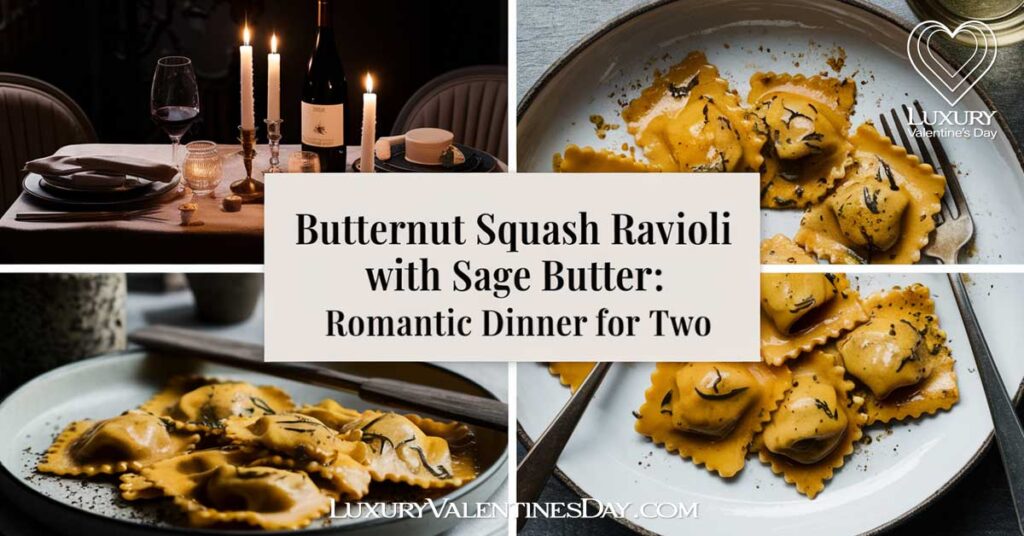
Table of Contents
ToggleHow to Achieve Perfect Ombre Effects on Your Cookies
If you’re looking to bring soft, beautiful gradients to your cookies, ombre decorated cookies are the perfect way to add a stylish, colourful flair to your baking.
Ombre decorating, with its smooth transition from light to dark shades, brings a sense of elegance and sophistication. It’s a stunning technique for adding depth and dimension to cookies, ideal for a wide variety of themes and events.
Imagine serving cookies with gradients of pinks, blues, or even pastels for spring—each one a miniature work of art that fades seamlessly from one shade to the next. With ombre decorated cookies, you can create a sophisticated, visual impact that delights every guest.
Ombre decorating is surprisingly accessible with the right tools and techniques. By layering icing in graduated shades, you can achieve a professional ombre effect that’s perfect for Valentine’s Day, birthdays, weddings, and more. This guide will walk you through simple steps to create ombre decorated cookies that will make any occasion feel extra special.
For more Valentine’s Day cookie decorating inspiration, check out our ultimate guide to cookie decorating ideas.
What is Ombre Decoration?
Ombre decoration is a design technique where colours blend gradually from one shade to another, creating a smooth gradient effect. The term “ombre” is French for “shaded,” which perfectly describes this approach as it involves a transition between shades—either within the same colour family or across complementary colours.
How Ombre Decoration Works for Cookies
When decorating cookies, ombre decoration typically involves:
- Layering Icing Colours: Applying different shades of icing from light to dark (or vice versa) in gradual steps. This can be done with royal icing, buttercream, or glaze.
- Blending with Tools: Small brushes, toothpicks, or spatulas are used to blend colours at the transitions, making them appear seamless.
- Creating Multi-Coloured Gradients: Bakers often use two or more colours to produce a multi-tone effect, perfect for designs like sunset gradients, pastel rainbows, or seasonal hues.
Why Use Ombre on Cookies?
Ombre decoration adds depth and visual interest to cookies, making them look polished and artistic. It’s popular for various occasions like weddings, holidays, and special events where a sophisticated, soft look is desired. This technique can transform simple cookies into stylish treats that look professional and unique.
How to Create Ombre Icing
Creating an ombre effect with royal icing is simpler than it seems and doesn’t require advanced skills—just a bit of patience and the right tools. Here’s a step-by-step guide to achieving the perfect ombre gradient:
1. Prepare the Royal Icing
Start by making a batch of royal icing with a consistency suitable for flooding—thick enough to hold its shape, but fluid enough to spread smoothly. Divide the icing into two or three bowls, depending on how many gradient shades you want to create.
Choose Your Colours: Select colours that transition well into each other, like different shades of pink, blue, or purple. Gel food colouring works best as it gives vibrant colours without altering the icing’s consistency. Add the colouring gradually, mixing until you achieve the desired shades. Keep one bowl with the lightest shade, and progressively darken the colours in the other bowls.
Tip: If you’re creating a classic ombre look, go from a darker to a lighter shade of the same colour. For a bolder style, consider using contrasting colours that transition smoothly.
2. Flood the Cookie with Icing
Begin by flooding the cookie with the darkest colour. Start at one end of the cookie and pipe a thick line across that section. Then, move to the next shade and pipe a line next to the previous one, overlapping slightly. Repeat this step for each colour, working from the darkest to the lightest shade. Use a piping bag with a small round tip for precision.
Tip: Work quickly to keep the icing wet while blending, as royal icing starts to set once exposed to air.
3. Blend the Colours for a Seamless Gradient
Use a toothpick, small palette knife, or fine brush to gently blend the edges where the colours meet. Move the tool in a back-and-forth or circular motion to mix the shades together without over-blending. The goal is to create a smooth transition from one colour to the next without harsh lines.
Technique Ideas
Toothpick Swirls: Drag a toothpick back and forth where the colours meet for a subtle blend.
Brush Strokes: Use a damp, fine brush to soften the edges between colours, moving in small, gentle strokes.
Vertical Blending: For a more natural gradient, drag the colours in a vertical motion from top to bottom, blending gently.
4. Create Additional Depth with Layers
For a more intense ombre effect, you can layer the icing by allowing the first gradient layer to dry and then adding a second thin layer of blended colours. This creates more depth and enhances the gradient, making the colours richer and more defined.
Tip: Use a slightly thinner consistency for the second layer to avoid covering the first layer completely. You want the colours to build gradually.
5. Let the Icing Set
Allow the cookies to dry completely, preferably overnight, to ensure the icing hardens properly. The drying process will make the gradient more pronounced and prevent smudging.
Tip: If you’re short on time, you can use a fan or a low-speed hairdryer (cool setting) to help the icing set faster.
Tools and Techniques for Creating Ombre Decorated Cookies
Adding an ombre effect to cookies can bring a unique, professional touch to your designs. This table outlines essential tools, techniques, and tips to help you create ombre decorated cookies with ease, from smooth transitions between colours to mastering the perfect gradient.
| Tool/Technique | Best For | Tips for Use | Suggested Designs |
|---|---|---|---|
| Multiple Shades of Icing | Creating gradual colour transitions | Start with a base colour and add white or darker shade gradually | Single-colour gradients, multi-tone ombre |
| Piping Bags with Tips | Controlled icing application | Use fine tips for precision and layering colours smoothly | Horizontal and vertical ombre effects |
| Toothpicks or Small Brushes | Blending colours seamlessly | Gently swirl colours together for a blended look | Swirled ombre, watercolor effect |
| Spatula or Scraper | Smoothing gradients on larger surfaces | Lightly blend colours with a scraper for a smooth finish | Full-cookie gradient |
| Edible Gel Food Colours | Creating vibrant or pastel ombre designs | Use sparingly to adjust shades without overpowering the base colour | Bold ombre, pastel effects |
Design Inspiration for Ombre Icing
Ombre icing is incredibly versatile, and you can adapt the gradient to fit a variety of themes, colours, and occasions. Here are some ideas to inspire your next ombre decorating project:
1. Romantic Valentine’s Day Ombre
Use shades of pink, red, and white to create a classic Valentine’s Day theme. Start with a deep red at the base, transitioning to soft pink in the middle and finishing with a creamy white at the top.
Tip: Add tiny edible heart confetti or a sprinkle of edible glitter while the icing is still wet for a romantic touch.
2. Springtime Pastels
Go for a soft and delicate look with pastel shades like mint green, pale yellow, and baby pink. This light gradient is perfect for spring events like Easter, Mother’s Day, or garden parties.
Tip: Use an iridescent pearl dust to highlight the gradient once the icing is dry, giving the cookies a soft shimmer that catches the light.
3. Beachy Blues for a Nautical Theme
Create a sea-inspired ombre with shades of blue, starting with a deep ocean blue at the base, transitioning to a sky blue, and finishing with a pale aqua or white at the top. This gradient mimics the colours of the ocean and sky, making it ideal for summer gatherings or beach-themed events.
Tip: Add small edible shells or a dusting of coarse sugar to mimic sand for a playful seaside effect.
4. Elegant Monochrome Ombre
For a sophisticated, modern look, create a monochrome ombre with shades of grey to white. This elegant design is perfect for black-tie events, weddings, or formal dinners.
Tip: Highlight the gradient with a thin line of edible silver or gold paint along the edge of the cookie for a luxurious finish.
5. Tropical Sunset Vibes
Use vibrant tropical colours like orange, coral, and pink to mimic a sunset gradient. Start with a deep coral at the base, transitioning through warm orange to a pale yellow at the top.
Tip: Use a very light, sheer layer of edible glitter on the finished cookies to give them a glowing, sunlit effect.
6. Gothic Ombre for a Dramatic Touch
For a bold and dramatic look, go for a gothic-inspired gradient with deep shades like black, purple, and maroon. Start with a black or deep purple at the base, transitioning to a dark red and finally a light maroon or grey.
Tip: Use metallic edible paints (like gold or silver) to add tiny accents or patterns over the gradient once dry for a striking contrast.
Tips for a Perfect Ombre Effect

1. Use Similar Tones for a Natural Blend
When creating an ombre effect, use colours that are close in shade to each other for a smooth transition. This ensures that the blending looks seamless and natural. Avoid using highly contrasting colours unless you’re aiming for a bold or graphic look.
Tip: If you want a more dramatic ombre, choose shades that are a few tones apart but in the same colour family, like a rich navy to sky blue or dark purple to lavender.
2. Test Colours Before Committing
It’s always a good idea to test your colours on a piece of parchment paper or a spare cookie before applying them to the final product. This allows you to see how they blend together and make adjustments if needed.
Tip: Keep notes of the ratios you use to mix each shade, so you can replicate the gradient if needed for larger batches.
3. Work Quickly to Avoid Dry Lines
The key to a perfect ombre is blending while the icing is still wet. Work swiftly, especially when using royal icing, which can start to set within a few minutes. Have all your tools and colours ready before you begin.
Tip: If you find that the icing is drying too quickly, consider working in smaller sections of the cookie, completing the gradient bit by bit.
4. Use a Turntable for Easy Access
If you’re decorating larger cookies, consider using a cake turntable. It allows you to rotate the cookie easily while you work, helping you to blend the gradient evenly without lifting or smudging the icing.
Tip: A turntable is especially helpful for round cookies where you need to blend colours in a circular motion.
5. Clean Your Tools Between Shades
Keep a small bowl of water and a paper towel nearby to clean your toothpick or brush between blending colours. This prevents unwanted mixing and helps you maintain the integrity of each shade.
Tip: Dry the tool completely after each cleaning to avoid introducing excess moisture, which can thin out the royal icing and affect the final look.
By mastering the ombre icing technique, you can create visually captivating cookies that are both modern and elegant. The gradient effect adds a sense of depth and style, making your cookies the centrepiece of any celebration. Whether you’re going for a romantic theme or a bold statement, ombre icing provides a beautiful canvas to showcase your creativity.
Frequently Asked Questions About Ombre Decorated Cookies
What type of icing is best for creating an ombre effect on cookies?
Royal icing is best for creating a smooth ombre effect, as it provides control and dries to a firm finish. Buttercream can also work for a softer, textured look.
How do I create a smooth colour transition for ombre cookies?
Start with a base colour and gradually add more white or darker shades as you move across the cookie. Use a toothpick or small brush to gently blend the shades together for a smooth transition.
Can I use multiple colours in one ombre effect?
Yes, using two or more colours in an ombre gradient can add depth and uniqueness to your cookies. Just be sure to blend each colour transition gently for a cohesive look.
How can I make the ombre effect stand out more?
To make the ombre effect more noticeable, choose contrasting shades within the same colour family or use bolder colours. A fine layer of edible shimmer dust can also enhance the gradient.
How long does it take for ombre icing to dry on cookies?
Royal icing generally takes 6-8 hours to fully set, so it’s best to let your ombre decorated cookies dry overnight to avoid smudging the gradient.
Previous Article
Embossed Decorated Cookies: Techniques for Unique Textured Designs
Next Article
Pressed Herb Cookie Decoration: A Natural and Elegant Touch
Related Posts
- First Date Tips for Women: Making a Memorable First Impression
- Receiving Gifts Love Language: Unlocking Deeper Connections in Relationships
- Rose Day – February 7 : The First Prelude to Love
- Cookies Decorated with Glaze Icing: Easy Tips for a Smooth, Shiny Finish
- 100+ Funny Dating Quotes for Him That Will Make Him Smile
- Romantic Restaurants for the Perfect Date Night in Raleigh, NC













